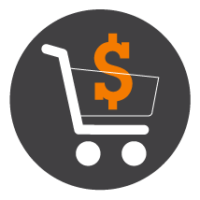 Over the last few years, Amazon has greatly increased its standing as the busiest online platform in retail history, and everything indicates that the company will continue this ambitious expansion well into next decade. One of the strongest performers within the Amazon retail ecosystem is the third-party marketplace that allows eCommerce entrepreneurs to quickly set up shop and start offering their products to millions of prospective buyers. Getting started on this platform is very easy, but keeping up with Amazon’s changing policies can be difficult.
Over the last few years, Amazon has greatly increased its standing as the busiest online platform in retail history, and everything indicates that the company will continue this ambitious expansion well into next decade. One of the strongest performers within the Amazon retail ecosystem is the third-party marketplace that allows eCommerce entrepreneurs to quickly set up shop and start offering their products to millions of prospective buyers. Getting started on this platform is very easy, but keeping up with Amazon’s changing policies can be difficult.
Learning About Brand Restrictions
Brand restrictions are part of a new set of Amazon policies designed to favor major players such as Nike. In mid-2017, marketplace sellers suddenly found themselves unable to sell items registered under an Amazon Standard Identification Number (ASIN) reserved for Nike; this was part of Amazon’s new brand gating effort, which restricts sales of certain products. This new program is still going through a testing phase, and it lets Nike police the marketplace as it looks for unauthorized sellers as well as counterfeiters.
If you are an inventor, manufacturer or distributor of exclusive products, your business will not be affected by Amazon’s brand restrictions; in fact, you may be able to enter the Brand Registry program to protect your trademark and intellectual property. Getting the brand gating benefit is a different story; you would have to be as big as Nike.
Monitoring Your Brand and Products on the Amazon Marketplace
Just like with Nike and virtually all other brands, looking out for counterfeiters and unauthorized sellers on Amazon is something you have to do on your own. Amazon will help you with removing counterfeiters, rogue sellers, and drop shippers from the marketplace, but you will have to bring the evidence forward.
Real-time monitoring and notifications about suspicious sales activity is highly recommended for sellers who have 10 or more ASINs listed in the Amazon Marketplace. To this effect, a subscription service such as Brandlox can go a long way in terms of protecting both brands and products.
Flushing Out Unauthorized Sellers
The craftiest drop shippers and unauthorized sellers will find ways to get around brand gating restrictions. The best way to stop them is to catch them in the act and moving quickly to issue a cease-and-desist letter. Brandlox can automate and document this process, which is shared with Amazon in case the rogue sellers persist by opening new marketplace and Seller Central accounts.
Stop Counterfeiters from Selling Your Brand!
To a certain extent, Brand Registry has proven to be effective to prevent intellectual property theft, but it is far from perfect. Counterfeiters seem to always find sneaky ways to list their knockoff products on the Amazon Marketplace, and they always hope to operate for as long as the brand or product owner is not aware of their actions.
When unauthorized sellers are detected by Brandlox, there is a chance that a counterfeit item is selling well and attracting other sellers who may be seeking to profit from retail arbitrage. If this happens to you, the next step should be to search the marketplace for the fakes and place a test purchase.
Brandlox Identifies Fakers!
One of the most comprehensive features offered by Brandlox is the ability to make and track test purchases as a way to gather evidence to be used against counterfeiters. Once proper documentation is submitted to Amazon, the faker will be removed and blocked from the marketplace.
If you have questions about how Brandlox can help you in the marketplace, contact one of their eCommerce specialists and discuss a subscription plan.
